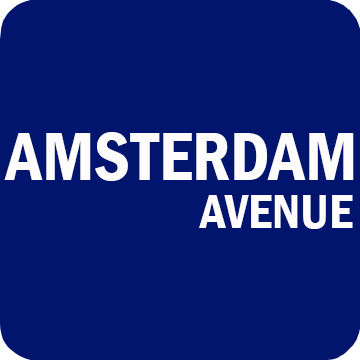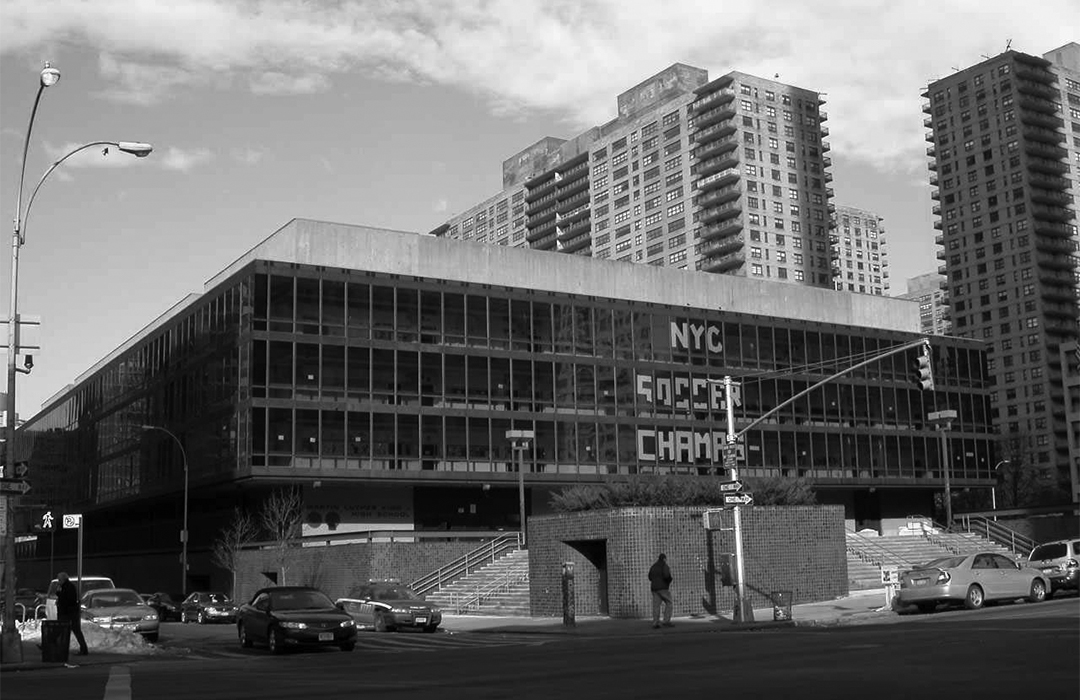
Martin Luther King Jr. High School: 122 Amsterdam Ave.
by Tom Miller
At the Board of Estimate meeting on October 30, 1970, a capital budget addition of $12 million was approved “to pay the higher costs of construction of the Martin Luther King Jr. High School on the West Side,” reported The New York Times. The article said the increased costs were due to “inflation and to inaccurate cost estimates.” With that additional money, the budget now topped more than $30 million.
The proposed facility was, of course, named in honor of the activist and civil rights leader who was assassinated two years earlier. Ironically, its construction was interrupted seven months later because of perceived racial discrimination. On June 22, 1971, The New York Times reported that 28 men were arrested on the construction site, “where they were demonstrating for the employment of more blacks and Puerto Ricans on such jobs.” A group called “Harlem Fight Back” staged the protest; their director, James Haughton, accused the Board of Education of failing “to live up to a promise on minority workers on this job.”
Three years later, with the city’s financial resources stretched, Martin Luther King, Jr. High School was still under construction. The project had strained the relationship between the Board of Education and City Hall. Manhattan Borough President Percy E. Sutton had been a strong advocate of building the school. At a meeting of the City Planning Commission on October 10, 1974, August Gold of the Board of Education’s Office of Educational Facilities Planning snapped, “The Borough President brought enough influence to bear to force us to build Martin Luther King High School even though we knew we didn’t need it.”
The project had strained the relationship between the Board of Education and City Hall.
Martin Luther King, Jr. High School finally opened in 1975. Designed by A. Corwin Frost, a partner in Frost Associates, the five-story facility won a design award from the New York State Chapter of the American Institute of Architects. It was sheathed with a curtain wall executed in self-weathering steel called Mayari R. Floor-to-ceiling windows along the perimeter hallways brought the outside into the building. The compromise, however, meant that some interior classrooms were without windows. A memorial sculpture cube on the school’s plaza by William Tarr is cast with quotations from King and biographical data. It was cast in the same metal used for the school’s façade. (It also disguises the building’s ventilation, heating and air conditioning intake unit.)
The school faced controversy almost from its opening. Board of Education officials soon proposed what to do with the underutilized building “we didn’t need.” A proposal in February 1977 would have moved the high school out and moved the High School of Music and Art and the High School of Performing Arts into the building. The plan fell through when parents accused the Board of forcing minorities out and disrespecting the memory of King. Parents halted repeated proposals to alter the use of the building.
By the mid-1980s, gangs and violence had crept into the school. Francisco Lopez, a 10th grader, told Esther B. Fein, a New York Times journalist, that he carried a knife in his jeans for protection. “I guess if no one else carried nothing, I wouldn’t need to,” he said. “But they do, so I do. That’s the way it is.”
A knife would not have protected the 15-year-old student who was shot in the stomach in the hallway on November 4, 1990. The victim had “exchanged words” according to a police spokesperson earlier. Around noon, the gunman, who was also 15, sought him out and shot him.
Carrying weapons was not the only thing the students had in common with grown-ups. When a reporter from Newsday questioned the school nurse, Donna Goldstein, in December 1990 about the proposal to give students free condoms, she replied, “If you saw all the diseases these kids come in with—chlamydia, gonorrhea, trichomonas, venereal warts. Most of the kids have been sexually active for months before they come in here.”
Before long, “officers in riot gear swarmed the building, moving floor to floor…”
Sex and violence came together in the fall of 1997. On October 7, The New York Times reported, “Four teen-age boys and two teen-age girls were arrested yesterday and charged with sexually assaulting a 13-year-old girl in a boy’s bathroom,” here. In the meantime, despite the turbulence, officials attempted to better the curriculum and environment within Martin Luther King, Jr. High School. In February 1998, for instance, “dance music and theater instruction” was added to the regular classes.
Nevertheless, violence continued in the school. A shooting occurred on January 15, 2002. In a situation too familiar to high school students today, in one classroom, the teacher blocked the door with two desks. Before long, “officers in riot gear swarmed the building, moving floor to floor,” reported The New York Times. Two students had been shot in the incident. A teacher, Judith Souvenir, told a reporter, “They say the gang kids don’t actually go here but that they use it as a hangout.”
As part of Mayor Michael Bloomberg’s and School Chancellor Joel Klein’s education reform policy, on June 27, 2005, Martin Luther King, Jr. High School was closed. It was replaced with six small, focused facilities that range from science and law to the arts. The top floor, for instance, houses the Manhattan/Hunter College High School of Science. Other schools include the High School of Law, Advocacy, and Community Justice, and The Maxine Greene High School for Imaginative Inquiry. All students share the gyms, cafeteria and library.
Tom Miller is a social historian and blogger at daytoninmanhattan.blogspot.com


